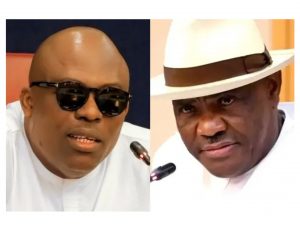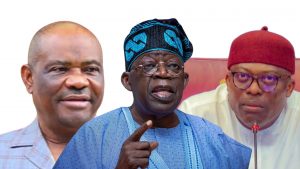The 4,000-year history of the Sikh turban
Written by Amit AminNaroop JhootiAmit Amin and Naroop Jhooti, a creative duo known professionally as Amit and Naroop, are London-based photographers, directors and authors of “Turbans and Tales.” The following is an edited excerpt from their book. The opinions in this article belong to the authors.Growing up in Southall, West London, where many of Britain’s Sikhs settled after moving to the UK, the turban was all around us: at home, in the gurdwara, on the street. It is Sikhs’ most identifiable feature. But tracing the turban’s origins back through history, we found that it was, at one time, also worn by Muslims, Hindus, Jews and Christians. The turban’s exact origin is unclear. A turban-like garment, found on a royal Mesopotamian sculpture dating to 2350 B.C., is believed to be the earliest known example, offering evidence that the garment predates the Abrahamic religions. Sikh warrior and political leader Akali Nutha Singh depicted wearing a style of turban known as “dastar bunga” — or “towering fortress.” Credit: Courtesy of the Council of the National Army Museum / Turbans and TalesThe use of turbans once stretched across India, the Middle East, Europe and Africa, protecting wearers from sun, rain or cold. In some regions, only believers had the privilege of wearing one, while other cultures ordered non-believers to assume turbans of different colors so they could be identified. (In eighth-century Egypt and Syria, for example, Christians wore blue turbans, Jews yellow and Samaritans red, while Muslims generally sported white ones).In India, only the royal entourage and high officials were permitted to wear turbans before the founding of the Mughal Empire in the 16th century. The garment was a symbol of status, often decorated with peacock plumes and ornaments. Hinduism, with its strict caste system, forbade individuals of lower castes from donning turbans. Islamic rule brought about changes. Stylized around their Persian and Arabic heritage, the Mughals’ turbans were conical and broad, unlike the smaller ones previously worn by Indians. And when Aurangzeb, one of the Mughals’ most controversial emperors, came into power in 1658, the garment was used as a tool to segregate the population. Some styles of turban, such as those worn by cavalry regiments or used for special occassions like weddings, feature a tail of loose cloth at the back. Credit: Courtesy of the Council of the National Army Museum / Turbans and TalesAurangzeb attempted to prevent non-Muslims from wearing turbans, decreeing that only the Islamic ruling class had the authority to wear them. But this, along with forced conversions and other fundamentalist policies, sat uncomfortably with the growing Sikh population. When their leader Guru Tegh Bahadur was executed by Aurangzeb in Delhi, his son Gobind founded a warrior group known as the Khalsa, before insisting that all Sikhs wear turbans to cover their uncut hair.The turban had become an act of defiance against the emperor. It was the Sikhs’ sign of freedom, a symbol of equality and a way to end caste distinctions.Transformation under British ruleThe arrival of the British in Punjab in 1845 triggered one of the most significant shifts in Sikh identity. Despite defeating the Khalsa, the British were impressed with their military skills and began recruiting Sikhs to fight for the empire. Aware that caste issues could affect the cohesiveness of the British Indian Army — which also included Hindu and Muslim soldiers — the British made it mandatory for all soldiers to wear a turban, creating a sense of equality.The British Indian Army made it mandatory for all soldiers to wear a turban. Credit: Courtesy of the Council of the National Army Museum / Turbans and TalesBut the varying styles, shapes and sizes didn’t sit well with the colonial rulers, who thought the garments looked scruffy. They decided to replace natural rolled layers with neat, symmetrical folds, leading to what is now commonly known as the “Kenyan” style turban. The British also introduced insignia to help identify regiments, which were mostly organized by race or class. To identify Sikh soldiers, they used an insignia of a “chakkar,” a throwing weapon, that was pinned to the front of their turbans. Another British-influenced change to Sikh identity was the tying of their beards. Traditionally, Sikhs would allow their uncut beards to flow loose. But, this posed problems when using British weaponry, as loose beards were prone to catching fire when operating a rifle. The British military changed the way turbans were folded. Credit: Courtesy of the Council of the National Army Museum / Turbans and TalesThe solution, imposed by the British, was to roll up and tie their beards over their chins, which became a defining look of the Sikh soldier. Although its purpose was initially functional, Sikh men continue to roll their beards to this day, mainly for its aesthetic appearance. During World War I, Sikh soldiers wore impressive large turbans, approximately eight meters in length. But World War II brought about a shift in army policy, meaning that Muslims and Hindus were no longer required to wear them. Although this change only affected soldiers, it was the first stage of the turban being removed from non-Sikh identity in India. Postwar strugglesAfter the British granted India independence in return for its support in the war, the country’s religious groups set about rethinking their identities. Muslims who moved to the newly formed Pakistan adopted the crescent moon and the color green as symbols, losing the turban and the orange of imperial India. With violence often breaking out between religious groups, Hindus also shed the garment through fear of being mistaken for Sikhs. In a country that once saw turbans as the pinnacle of social status, only the Sikhs were left wearing them (although India’s Hindus and Muslims often wear them during special occasions, such as weddings.)The violent aftermath of partition also led a number of Sikhs to leave India for the UK in the postwar years. Initially, they were greeted with respect and honor for their role in the wars. Gestures of gratitude, such as free cinema tickets, were common. Related video: ‘London’s got younger and I’ve got older’ But their glory was slowly forgotten, and the turban began to be seen as an obstacle to integration. Having left their beloved home in the hope of a better life, Sikhs felt they had two options: assimilate by cutting their hair and removing their turbans, or wear darker ones that wouldn’t attract attention. Many did the former, but some rebelled against the system. Take Sohan Singh Jolly, a retired police officer, who campaigned against a decision to ban a British bus driver from wearing his turban at work. After exhausting all methods of protest, Sohan threatened to set himself on fire if the rule wasn’t changed.His campaign was ultimately successful. But not everyone agreed with Jolly’s tactics, fearing they could lead to alienation of Sikh communities and accusations of radicalization. A more diplomatic approach was needed if Sikhs were going to be treated as equals.An image by the authors from their photography project exploring the turban’s role in Sikhism today. Credit: Amit and NaroopSo they began fighting discrimination through the courts. In the 1970s, when the British made it illegal to ride a motorbike without a helmet, many Sikhs refused, as it would mean removing their turbans while riding. A campaign led to the law being amended to exclude followers of the religion.And in the 1980s, the family of 12-year-old Gurinder Singh Mandla successfully sued a Birmingham school for racial discrimination after it denied him a place for refusing to remove his turban. The case changed the way that Sikhism was treated in the UK thereafter, with the garment now protected by British law.Today in the UK, Sikhs no longer feel they need to mute their turbans to conform. With flamboyant fabrics and accessories, young Sikhs use them as a way to reflect their personality, as well as a symbol of their faith. “Turbans and Tales,” published by Unbound, is available now. Scroll through the gallery above to see images from the book.






